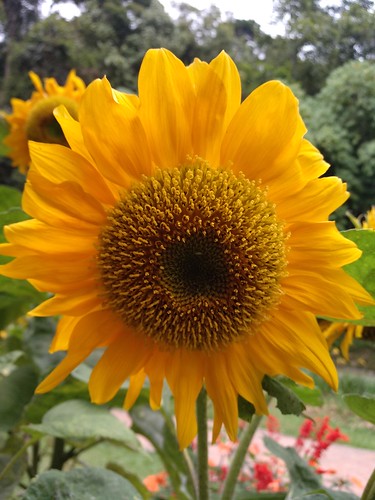HLAMHC variations, polymorphisms of immunoregulatory genes may possibly also influence RBC alloimmunization.
HLAMHC differences, polymorphisms of immunoregulatory genes may perhaps also influence RBC alloimmunization. Polymorphisms in TRIM 2 (also referred to as Ro52), an immunoregulatory element in close proximity for the human globin gene, happen to be proposed to effect immune response to transfused RBCs in individuals with sickle cell illness [79]. Followup studies in reductionist animal models, having said that, showed that TRIM two knockout animals and wildtype recipients had equivalent humoral immune responses to transfused HOD RBCs [80]. It is probable that distinct benefits might happen to be observed when the TRIM two knockout animals had also had sickle cell illness, in the event the transfused RBC antigen had been various, or if recipients had low levels of TRIM 2 expression as opposed to fully lacking this gene. Within the absence of such studies, nonetheless, the outcomes from murine models suggest that decreased TRIM two expression might not, in and of itself, enhance RBC alloimmunization. A current study investigating the SNPs  of responder and nonresponder human patients with sickle cell disease has implicated CD8 polymorphisms as potentially contributing to recipient immune responses [8]. These CD8 polymorphisms may have myriad immunological consequences, including signal modulations of B lymphocytes and altered functionality of dendritic cells. While there have already been no followup animal research as of however, a developing physique of published and unpublished data in murine RBC alloimmunization models suggests that B cells and dendritic cells are integral in generating immune responses to transfused RBCs [82, 83]. An additional genetic recipient issue that warrants may be the effect of sickle cell illness on RBC alloimmunization. A single glutamine to valine substitution in the globin gene benefits within a disease with lots of clinical manifestations. Ongoing studies are investigating which disease manifestations could be attributed solely for the altered globin gene and resultant RBC sickling, and which may be as a consequence of coinheritance of immunoregulatory or other genes as well as the sickle globin gene. It is effectively recognized that this patient population has amongst the highest levels of RBC alloimmunization following transfusion of any patient population [846]. Even so, there is substantially debate surrounding the reasons for the higher prices of RBC alloimmunization [5, 87, 88], with possible things including transfusion burden, RBC phenotypic differences in between donors and recipients, and RBC genotypic variants in the sickle sufferers themselves. Sickle cellassociated vascular disease and chronic inflammation [89], too as immune dysregulation [90, 9], could also potentially contribute PubMed ID:https://www.ncbi.nlm.nih.gov/pubmed/26080824 towards the higher prices of RBC alloimmunization in patients with sickle cell illness.Transfus Med Hemother 204;4:406Ryder Zimring HendricksonFig. three. Transgenic RBCs expressing the KEL2B antigen were transfused just about every four weeks (to get a total of 3 transfusions) into Townes mice GSK2330672 web homozygous for Hgb SS, heterozygous for Hgb S (AS), or homozygous for Hgb A (AA). A AntiKEL glycoprotein Igs had been measured by flow cytometric crossmatch 28 days immediately after the initial transfusion, and B measured once more 28 days following the 3rd and final transfusion.To investigate the influence in the sickle globin gene inside a reductionist model, transgenic animals with sickle cell disease have been transfused with transgenic RBCs expressing the HOD antigen, and alloimmune responses were measured longitudinally [92]. Animals with sickle cell disease (like Berkeley and Townes animals, which ex.
of responder and nonresponder human patients with sickle cell disease has implicated CD8 polymorphisms as potentially contributing to recipient immune responses [8]. These CD8 polymorphisms may have myriad immunological consequences, including signal modulations of B lymphocytes and altered functionality of dendritic cells. While there have already been no followup animal research as of however, a developing physique of published and unpublished data in murine RBC alloimmunization models suggests that B cells and dendritic cells are integral in generating immune responses to transfused RBCs [82, 83]. An additional genetic recipient issue that warrants may be the effect of sickle cell illness on RBC alloimmunization. A single glutamine to valine substitution in the globin gene benefits within a disease with lots of clinical manifestations. Ongoing studies are investigating which disease manifestations could be attributed solely for the altered globin gene and resultant RBC sickling, and which may be as a consequence of coinheritance of immunoregulatory or other genes as well as the sickle globin gene. It is effectively recognized that this patient population has amongst the highest levels of RBC alloimmunization following transfusion of any patient population [846]. Even so, there is substantially debate surrounding the reasons for the higher prices of RBC alloimmunization [5, 87, 88], with possible things including transfusion burden, RBC phenotypic differences in between donors and recipients, and RBC genotypic variants in the sickle sufferers themselves. Sickle cellassociated vascular disease and chronic inflammation [89], too as immune dysregulation [90, 9], could also potentially contribute PubMed ID:https://www.ncbi.nlm.nih.gov/pubmed/26080824 towards the higher prices of RBC alloimmunization in patients with sickle cell illness.Transfus Med Hemother 204;4:406Ryder Zimring HendricksonFig. three. Transgenic RBCs expressing the KEL2B antigen were transfused just about every four weeks (to get a total of 3 transfusions) into Townes mice GSK2330672 web homozygous for Hgb SS, heterozygous for Hgb S (AS), or homozygous for Hgb A (AA). A AntiKEL glycoprotein Igs had been measured by flow cytometric crossmatch 28 days immediately after the initial transfusion, and B measured once more 28 days following the 3rd and final transfusion.To investigate the influence in the sickle globin gene inside a reductionist model, transgenic animals with sickle cell disease have been transfused with transgenic RBCs expressing the HOD antigen, and alloimmune responses were measured longitudinally [92]. Animals with sickle cell disease (like Berkeley and Townes animals, which ex.